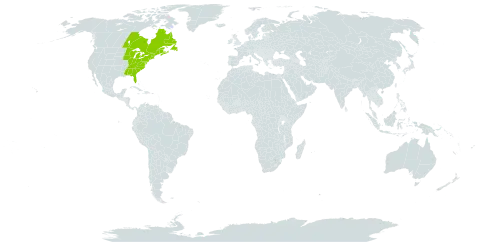Plants prostrate or creeping; branches spreading. Stems to 30(-50) cm. Twigs often hirsute-hispid, especially when young. Leaves alternate (distal leaves sometimes closely spaced, appearing subopposite or opposite); petiole 1-5 cm, with unicellular hairs of varying lengths; blade ovate-elliptic, (2-)3-8(-10) × 1.5-5.5 cm, base rounded or cordate, margins ciliate with stiff hairs, plane, apex obtuse to acute and mucronate, abaxial surface with distinctive reticulate venation, adaxial and abaxial surfaces with long, soft or stiff hairs, becoming glabrate. Inflorescences axillary and terminal clusters, 2-5 cm; bracteoles persistent, 2, 4-7 mm (often extending to calyx lobes), hirsute. Flowers bisexual or unisexual due to undeveloped or sterile stamens or ovary (staminate flowers larger than carpellate), with spicy fragrance; sepals distinct nearly to base, 5-6 mm, hirsute; corolla tube 6-10(-15) mm, lobes 5, spreading, rose or pink to white, 6-10 mm; filaments adnate to base of corolla tube, hairy basally; ovary glandular-hairy; style slender, with collar or ring of tissue partly adnate to stigma. Capsules depressed-globose, 5-lobed, 5-8 mm diam., fleshy, outer surface glandular-hirsute, white and pulpy within due to persistent, fleshy placentae. Seeds brown, 0.5 mm. 2n = 24.
More
Stems branched, 2–4 dm, hirsute; lvs ovate or oblong, 2–10 cm, entire, rounded or cordate at base, ± pilose, especially when young; petiole pubescent, half as long as the blade; spikes 2–5 cm; bracts ciliate; cor-tube 8–15 mm, the lobes 6–8 mm. Sandy or rocky, acid soil; Nf. and Que. to Sask., s. to Fla., Miss., and Io. Apr., May.
A small evergreen shrub. It grows about 15 cm high. It creeps or trails over the ground. The stems form roots along its length. The flowers are in clusters and are pink and waxy. There are 5 or 6 flowers in a cluster at the ends of shoots. The fruit are round capsules filled with seeds.






